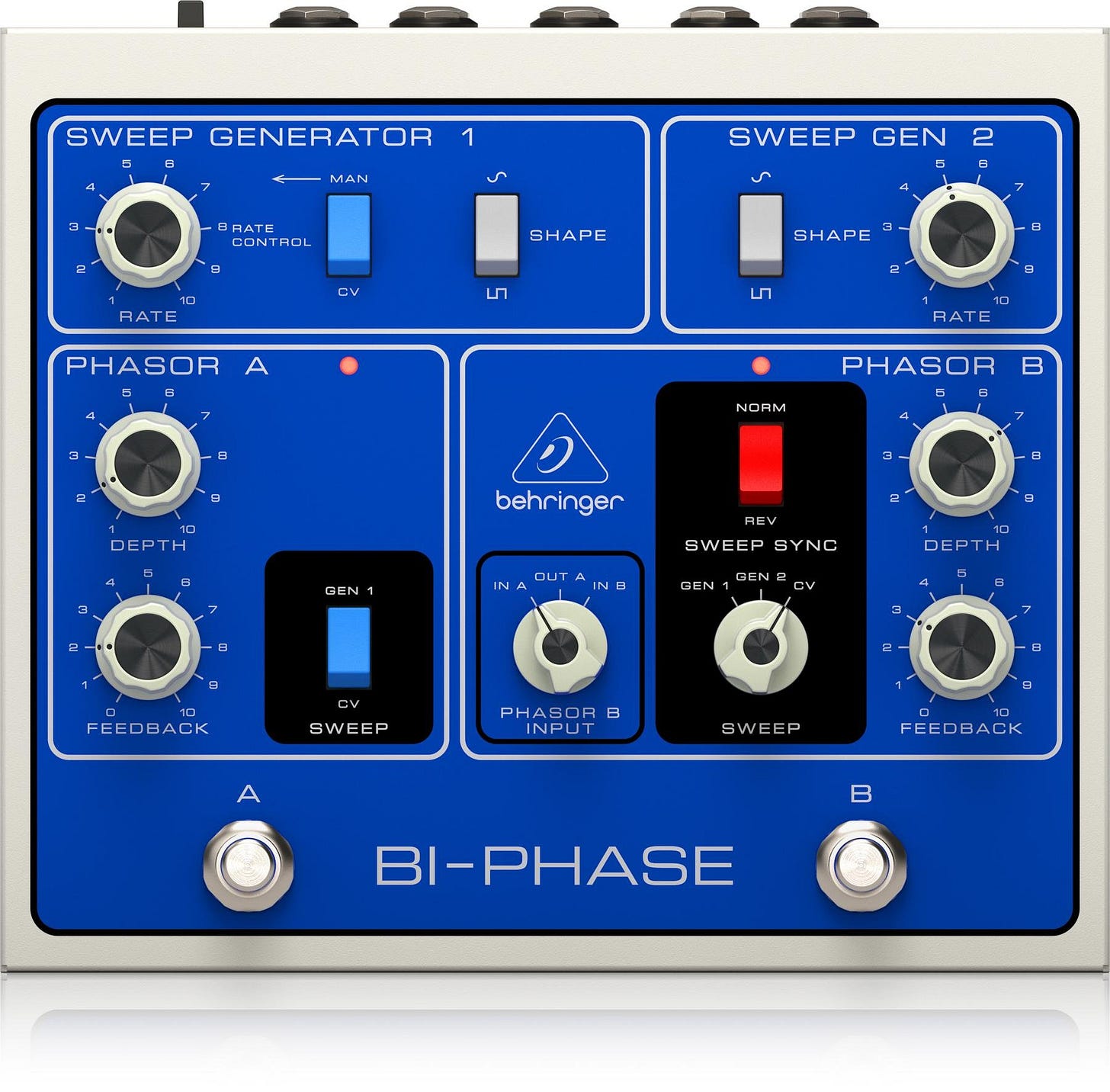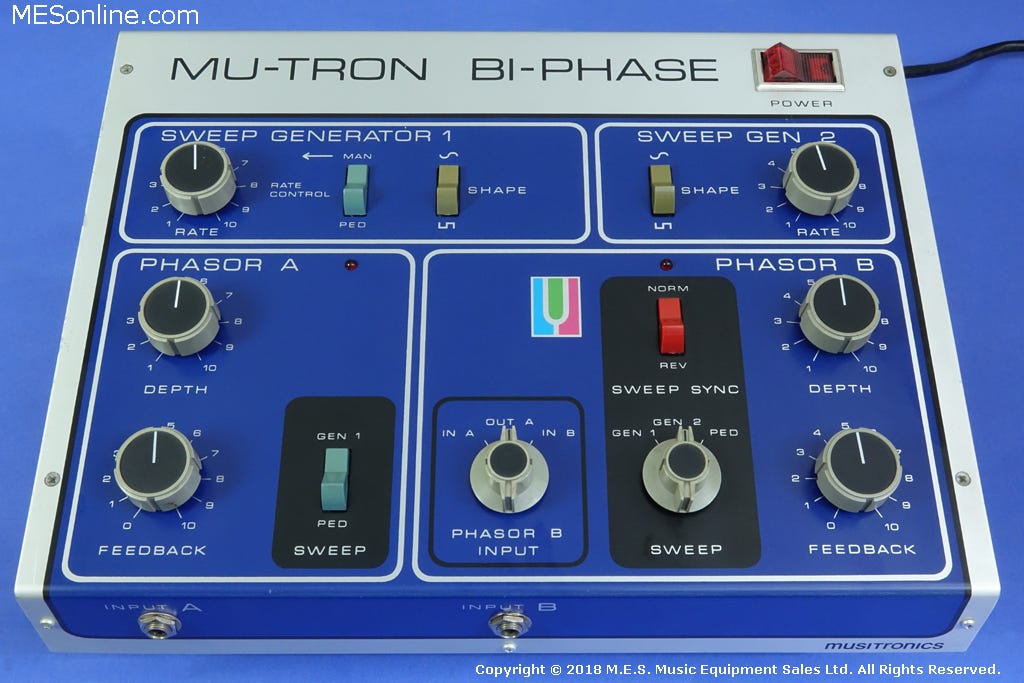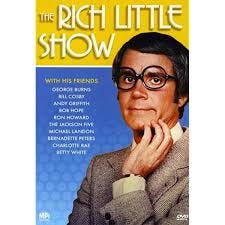Review of the Behringer Bi-Phase pedal and then some.
Some thoughts about the Behringer clone of the MuTron Bi Phase and the sonics of Behringer pedals in general.
Preface: I have collected pedals for about 30 years and I have a background in electronics so I know how to build and repair them. I have been building pedals from scratch since jr. high school in the mid-80s.
I am also not really a gear snob, so I have no problem using "cheap" gear if it does the job I want it to do. I don't believe in myths that defy basic electronic theory and evidence.
Behringer is a hot topic amongst online music groups. Many people bash them for valid reasons (questionable business practices, reverse-engineering everyone else’s original products and selling them for a fraction of the cost, for instance). Other people bash them for invalid reasons ("Their pedals are plastic junk. I heard from a guy who was told by the guy at Guitar Center that he had a friend whose Behringer pedals are crap because they're plastic, man") I'm on the fence about their practices of reproducing gear of other manufacturers that are CURRENTLY still in production. That's kind of sketchy, if you ask me. Making clones of vintage gear that no one has made in decades, though… I feel like if there's a market for it, someone should do it. If Roland isn't going to reissue a Juno 106, might as well make a Deepmind, right?
I own several Behringer (and at least one modern TC) pedals. If it means I can get that "one sound" that I would want out of, say, a vintage Slow Gear that hasn’t been made for 40 years, which I might use once in a decade, I have no problem buying the $40 Behringer clone vs. a $400 vintage pedal and leaving it on the shelf until I need it. I also have had a Reverb Machine (Line 6 Verbzilla clone) and an Ultra Shifter/Harmonist (Boss clone) - both digital pedals, on my live pedalboard for at least 10 years of weekly gigging and have not had an issue.
I also have several Behringer analog pedals. Most of these, I am realizing, DO have an issue that makes me not use them. I am trying to get to the bottom of it and I was curious to see if anyone else has found what I have found.
The Behringer Bi-Phase is a clone of the vintage Mu-Tron Bi-Phase (which Mu-Tron, or whoever owns that brand now, is also making an updated Bi-Phase II now, as well). I can't justify shelling out $1500 for a 45 year old vintage Mu-Tron, but for $149, I will take a chance on the Behringer.
Vintage Mu-Tron Bi-Phase from the late 70s:
SO ABOUT THE PEDAL...
On first playthrough, I started to realize that there is a common trait to many of the analog pedals that I have from Behringer. Something I don’t like about them.
The Bi-Phase definitely does cool stuff and is feature-rich. It seems pretty sturdy on the outside with a decent bent-metal box, which is smaller and more pedalboard-friendly than the original (though still pretty big). It is essentially a phasor workstation or sorts, with two separate optical phase shifter circuits, each with its own LFO (labeled “Sweep Generator” as on the original) with rate, depth and feedback controls. They are called Phasor A and Phasor B. Phasor A can be controlled via its own dedicated LFO or a CV/Expression input. Phasor B can be controlled by synching to Phasor A’s LFO, synching to Phasor A’s LFO, but inverted so they sweep opposite each other (this is great in stereo), its OWN independent LFO or CV. Each LFO has a choice of triangle or square waveforms. I haven't tried the CV input yet, nor have I read the manual about it. Being labeled "CV" implies that it expects to see a voltage as opposed to a resistance, like a traditional Expression Pedal, but I’m not certain. The routing is very flexible as well: You can use Phasor A and B in series in mono, by plugging into Phasor A in and coming out of Phasor B out. You can use them in parallel, in stereo, both Phasors fed from Input A and using outputs A and B. You can use each phasor totally independently, as each one has separate In and Out. There are so many ways that you can configure this box that it seems like an endless source of inspiration and cool swirling effects.
The problem is the sound.
Hear me out: I know it’s an analog pedal, but there is something about it that sounds like a weak approximation of the real thing. It’s like something you would expect out of a phasor model on a digital Peavey Vypyr practice amp. There is a lack of depth. It sounds thin and weak and sort of “gray” where the real Mu-Tron is very “colorful”. I have three vintage Mu-Tron Phasor IIs, which the Bi-Phase is essentially two of, at its core, so I am familiar with the character of the effect. My gripe isn’t even about comparing the character of the effect with the original in some sort of shootout. There is a just a fizziness to the sound. It sounds like a bad digital approximation, even though it’s analog. It’s just not as rich and “chewy” sounding as the real thing. It’s not even as rich as a simpler phasor like a Small Stone or a Phase 90. It just seems like an amateur impressionist or a ventriloquist dummy when you want the “real deal” at best or Rich Little, at worst.
I have noticed this with many other analog pedals of theirs as well: Vintage Distortion (Big Muff clone), Vintage Phaser (Small Stone clone), Vintage Time Machine analog delay (Deluxe Memory Man clone), Super Fuzz and even the TC Juno Chorus (Behringer, TC and Klark Teknik, the latter two being great legacy companies with a reputation for high-end gear, are all a part of parent company, Music Tribe). They all sound thin, weak and like a lame approximation of the real thing. It’s not subtle.
At first I wondered if it was the placebo effect. Do I WANT to think the Behringer sounds bad? Nah, because the Reverb Machine sounds amazing, not just for the $49 I paid for it. I even bought a backup of that one. Then I wondered, early on, if it was the difference between surface mount and through-hole components of the originals. Having heard many other modern pedals with SMD components that sound fantastic, I ruled that out.
What I’m left wondering is whether it’s a trait of their bypass/buffering system. Is there something in that circuit that makes them sound like this? Is it just an inherent issue with their designers? Is there a weak component in the chain that’s in all of them?
Someone mentioned that it could be an impedance or incorrect power supply issue. To clarify, I tested it by going from a passive Les Paul Special straight into the pedal, then both into a vintage Traynor Guitar Mate in mono, then straight into two channels of a Trident 65 series mixer, feeding Pro Tools with Bias amp simulators inserted, on a clean Fender amp model. I used a single One Spot power supply at 9v 1000mA. The pedal claims it can run on 9vdc-12vdc. I have not tried a higher voltage.
Someday, when I have time and I care enough to, I will try some technical experiments and perhaps inject a signal generator into the circuit and follow it back from the output jacks to see if there is a place where it starts to sound thin. Until then, I will probably use Arturia Bi-Tron plugin more often than the pedal.
Roger






Hi. You should try 12v, its like night and day. Sounds rubbish on 9v, I concur.
Hmmm, I don't think it's copy and paste. They explicitly mention the name of the device in their declaration: https://mediadl.musictribe.com/media/PLM/data/docs/P0E8M/QSG_BE_0709-AJH_DUAL-PHASE_WW.pdf
Probably it is like you said and similar to TC's Juno Chorus and the Moog One: Analog Signal Path and digital disease everywhere else. Cheap Digital LFOs sounds like Bantha Poodoo, they have a _perfect_ shape, but that's not what's necessary....